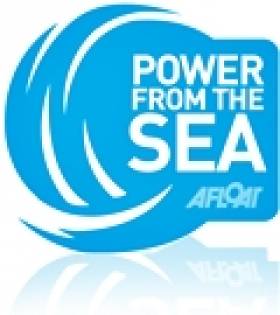Displaying items by tag: Gwynt y Môr offshore windfarm
Harland and Wolff to build two Offshore Substations for Siemens
Siemens, a global powerhouse in electronics and electrical engineering, has awarded Harland and Wolff Heavy Industries Limited the design and build contract for two offshore substation platforms for the Gwynt y Môr offshore wind farm off the coast of North Wales. The substations will be completed by June 2012.
"We are already a recognised renewables logistics base and prototype builder and are delighted to have been awarded this contract. It clearly demonstrates our continuing development as part of the UK supply chain for marine renewable energy. Our project goals are to make the design and build process frictionless for Siemens and to ultimately provide the operator, RWE Innogy, with a robust and durable offshore platform, built safely,
on time and to budget.'
"A considerable number of these platforms are required to meet the Government's 2020 targets, giving substantial opportunities in the near future," says Mr Cooper.
The Gwynt y Môr offshore wind farm is a 576MW, 160 turbine UK Round 2 wind farm being developed by a consortium of RWE Innogy, SWM – Municipal Utility Munich, Germany and Siemens 13km off the coast of North Wales. Siemens will supply the wind turbines which will be connected via 33kV array cables to two new offshore substations.
Onboard the H&W built platforms Siemens' equipment will transform the power from 33kV up to 132kV for transmission back to a new onshore substation at St Asaph also to be built by Siemens.
John Willcock, director of Major Projects for Siemens Transmission and Distribution Ltd. Says: "Siemens is delighted to make this award to Harland and Wolff. This is a key project for Siemens, as one of the largest of its type ever developed. The H&W team impressed us by their approach to the project and understanding of our requirement.
This is a new relationship for both companies and one that could be fruitful in the future. It is great also to be able to support a UK-based firm."
Trevor McCormick, H&W Project Manager will have responsibility for the project in Belfast. He says: "This is a substantial project that will be the focus of our attention over the next two years. The project was secured due to a number of factors including the commitment demonstrated by all areas of the company during the tendering phase; we fully intend carrying this enthusiasm and dedication through to completion."
H&W, having decades of experience in offshore and marine projects for the oil, gas and shipbuilding industries, has designed the platform using stiffened panels typical of shipbuilding and offshore structures. This approach offers cost and weight savings, increased watertight integrity, structural flexibility and opens opportunities for floating, self-installing projects in the future.























